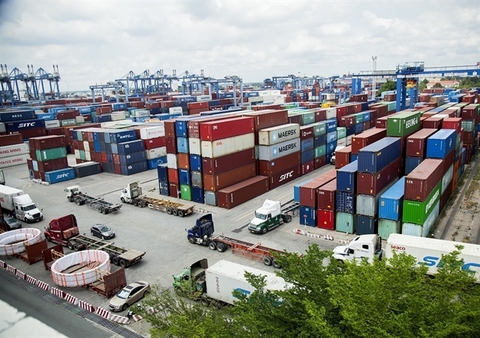Exporters advised to minimise headwinds of currency volatility
Exporters advised to minimise headwinds of currency volatility
As the world’s commodity and foreign exchange markets have many fluctuations, domestic exporters should pay attention to the exchange rate between the Vietnamese dong and other currencies to enable them to choose the most profitable ex-import markets and payment currencies.

Phan Minh Hoa, an economics lecturer at RMIT University, recommended the measures as local firms have started to suffer from headwinds of the significant fluctuations in the US dollar, the euro and Japanese yen on their production and business performance.
The dollar has this year strengthened sharply against the euro and the Japanese yen as US Federal Reserve has raised interest rates to curb the 40-year high inflation.
While the euro plunged below parity with the dollar last month – a 20-year low, the yen also hit its lowest level against the dollar in 24 years in June 2022.
The Vietnamese dong has so far depreciated by some 2 per cent against the dollar and is forecast to depreciate below 3 per cent in 2022, according to VNDirect Securities Company.
"In theory, the appreciation of the US dollar can increase export revenue, and the exporters can benefit when converted to dong, but in fact, the exporters also have to pay higher costs for imported materials as well as logistics and warehousing fees," finance and banking experts Can Van Luc told Viet Nam News.
“Export prices only increased by 9 per cent on average, while import prices increased by 11 per cent,” Luc explained, adding that many importers of Vietnamese goods asked Vietnamese exporters to reduce their prices.
Besides, as most currencies, including the yen and the euro, have weakened significantly against the dollar, demand for import goods from the Japanese and European markets has declined, negatively affecting Vietnamese exports, according to Luc.
Kim Thu, a representative of the Vietnam Association of Seafood Exporters and Producers, said the strong depreciation of the Japanese yen against the US dollar had caused Japanese importers to suggest renegotiating import prices to compensate for their losses when the yen weakened.
In addition, some Japanese importers, who have already signed import contracts, have requested to negotiate to receive the goods slower from three to five months to wait for consumers to get used to the new prices.
Due to heavy losses when the local currency depreciates, Japanese importers were adjusting their import plans and demands, Thu said.
According to Thu, although Vietnamese exporters were not affected too much due to the depreciation of the yen and the euro because most of their import and export transactions were in US dollars, they have been affected by decreasing import demands as profits of the importers reduced.
Besides, when the yen and the euro weaken, imported goods become more expensive. At that time, Japanese and European consumers chose essential items at affordable prices, which reduced consumption demands.
Vo Van Phuc, General Director of Vietnam Clean Seafood Joint Stock Company, said the purchasing power of consumers had decreased significantly, and seafood exports had faced difficulties since August 2022.
Besides choosing ex-import markets and payment currencies, Hoa said, to hedge against exchange rate risks, local firms should choose banks with good trade finance ability and use derivative financial instruments such as foreign currency futures and swaps.
In the long term, firms would need to increase the competitiveness of exported goods and make a difference in their products.
Exporters, who are currently using many imported materials companies, should be looking for alternative material resources, especially domestic ones, to reduce dependence on imports gradually, Hoa suggested.
In addition, Hoa said, policymakers must also ensure a balance between economic growth goals and inflation control.
He explained if the dong depreciated too quickly, the cost of importing raw materials and inflation would increase and affect production. In addition, there was an increased foreign debt burden or the risk of being considered by the US for currency manipulation.
On the contrary, if the exchange rate was too restrained, while currencies of other countries had depreciated, export goods would also lose their competitiveness, Hoa said.






















